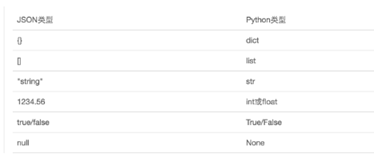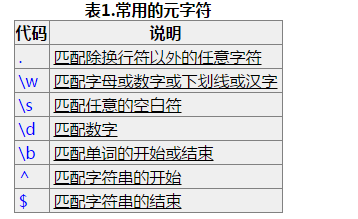1.logging模块
等级
debug--->info--->warning(默认)--->error--->critical
配置两种方式:
#1.congfig函数logging.basicConfig(level=logging.DEBUG,#设置等级 format="%(asctime)s---%(message)s",#文件格式 filename="logger",#设置文件名 filemode="a"#文件模式)logging.debug("message")num=1000logging.info("cost %s"%num)logging.info("message")logging.warning("message")logging.error("message")logging.critical("message")import logging 
注意:流向只能有一个,屏幕或者文件
#2.logger 是一个对象logger=logging.getLogger()# print(logger)在模块中产生一个对象fh=logging.FileHandler("logger2")#产生一个文件对象sh=logging.StreamHandler()#产生一个屏幕输出对象logger.setLevel("DEBUG")#logger对象设定等级fm=logging.Formatter("%(asctime)s - %(name)s - %(levelname)s - %(message)s")#产生一个格式fh.setFormatter(fm)#文件对象引用格式sh.setFormatter(fm)#屏幕对象引用格式logger.addHandler(fh)logger.addHandler(sh)logging.debug("message")logging.info("message")logging.warning("message")logging.error("message")logging.critical("message") 2.JSON模块
把对象(变量)从内存中变成可存储或传输的过程称之为序列化;反过来,把变量内容从序列化的对象重新读到内存里称之为反序列化,并返回表达式的值。
JSON表示出来就是一个字符串,可以被所有语言读取,也可以方便地存储到磁盘或者通过网络传输。JSON不仅是标准格式,而且可以直接在web页面中读取,非常方便。
JSON和Python内置的数据类型对应如下:

import jsond={"name":"egon"}s=json.dumps(d)#将字典d转为json字符串--->序列化过程print(s)print(type(s))f=open("new","w")#产生一个文件f.write(s)#写入内容f.close()# ------------------------># dump用法f=open("new2","w")json.dump(d,f)#--->转成josn字符串,将json字符串写入f里# ------------------------>f=open("new")#读取内容data=f.read()data2=json.loads(data)#反序列化过程print(data2["name"])import jsonf=open("new3")data=f.read()res=json.loads(data)#只要是满足json格式的字符串 # 就可以使用loads反序列print(res["name"])数据类型表示import jsoni=10s='hello't=(1,4,6)l=[3,5,7]d={'name':"yuan"}json_str1=json.dumps(i)json_str2=json.dumps(s)json_str3=json.dumps(t)json_str4=json.dumps(l)json_str5=json.dumps(d)print(json_str1) #'10'print(json_str2) #'"hello"'print(json_str3) #'[1, 4, 6]'print(json_str4) #'[3, 5, 7]'print(json_str5) #'{"name": "yuan"}' 3.RE模块(正则表达式)
正则表达式是一种小型的、高度专业化的编程语言,它内嵌在python中,并通过re模块实现。
对字符串的模糊匹配
Re.findall()找到所有的匹配元素,返回一个列表

- 普通字符:大多数字符和字母都会和自身匹配(精准匹配)
import reprint(re.findall("alex","dfuhualalex"))>>['alex'] - Findall(“规则匹配的字符串”,“需要匹配的字符串”) 匹配的字符串中有几个成功的都会显示
import reprint(re.findall("a..x","assxdfuhualalex"))>>['assx', 'alex'] - 元字符:(1.). 通配符:什么都可以代表。除了\n匹配不上,其他都可以匹配
import reprint(re.findall("a....x","dfuhualalmmex"))>>['almmex']import reres=re.findall("p\n....h","hello python p\nnsdfh")#规则匹配加\n属于普通匹配print(res)>>['p\nnsdfh'](2)^ 必须在字符串的开头匹配,否则匹配不成功
import reprint(re.findall("^a..x","assxdfuhualalex"))>>['assx'](3)$ 在字符串结尾匹配
import reprint(re.findall("a..x$","assxdfuhualalex"))>>['alex'](4)*重复符号(贪婪匹配) 匹配零到无穷次{0,}
import reprint(re.findall("alex*","asalexgnnkfnale"))>>['alex', 'ale'](5) +重复符号(贪婪匹配) 匹配一到无穷次{1,}
import reprint(re.findall("alex+","asalexgnnkfnale"))>>['alex'](6)? 重复符号(贪婪匹配) 匹配零到一次{0,1}
import reprint(re.findall("alex?","asalexxxgnnkfnale"))>>['alex', 'ale'](7) {} 万能的,想取几次取几次 可以表示* + ?
{加想要的次数}
import reprint(re.findall("alex{2}","asalexxxgnnkfnale"))>>['alexx']注意:贪婪匹配就是尽可能匹配,后面写?就变成惰性匹配
import reprint(re.findall("alex*?","asalexxxgnnkfnale"))>>['ale', 'ale']import reprint(re.findall("alex+?","asalexxxgnnkfnale"))>>['alex']import reprint(re.findall("alex??","asalexxxgnnkfnale"))>>['ale', 'ale'] - 字符集[] 表示或者 在字符集中有特殊意义的只有
(1)\
(2)-
import reres=re.findall("a[1-9]","a423bx56")#字符集显示1到9的一个print(res)>>['a4']import reres=re.findall("a[1-9]*","a423bx56")#[]后面+* 表示a,一个数字,0-无穷次print(res)>>['a423'](3)^ 非以它开头的
import reprint(re.findall("q[^a-z]","qa"))>>[]import reres=re.findall("[^\d]","a423bx56a")#取不是数字的print(res)>>['a', 'b', 'x', 'a']import reres=re.findall("[^\d]+","a423bx56a")#取不是数字,1到无穷print(res)>>['a', 'bx', 'a']注意:字符集中把部分符号变成了普通符号
-
\字符 转译反斜杠后面跟元字符去除特殊功能\. \*
反斜杠后面跟普通字符时限内特殊功能 \d \w
\d 匹配任何十进制数;它相当于类 [0-9]
练习:求小数import reres=re.findall("\d+\.?\d*\*\d+\.?\d*","2*6+7*45+1.4*3-8/4")print(res)>>['2*6', '7*45', '1.4*3']求负数print(re.findall("-{0,1}\d+\.?\d*\*\d+\.?\d*","2*6.000+7*45-1.4567*3-8/4"))print(re.findall("-?\d+\.?\d*\*\d+\.?\d*","2*6.000+7*45-1.4567*3-8/4"))>>['2*6.000', '7*45', '-1.4567*3']import reprint(re.findall("\d","12+24*8-(3+5*7)"))>>['1', '2', '2', '4', '8', '3', '5', '7']import reprint(re.findall("\d*","12+24*8-(3+5*7)"))>>['12', '', '24', '', '8', '', '', '3', '', '5', '', '7', '', '']\D 匹配任何非数字字符;它相当于类 [^0-9]
import reprint(re.findall("\D","12+24*8-(3+5*7)"))>>['+', '*', '-', '(', '+', '*', ')']\s 匹配任何空白字符;它相当于类 [ \t\n\r\f\v]
import reprint(re.findall("\s","hello world"))>>[' ']\S 匹配任何非空白字符;它相当于类 [^ \t\n\r\f\v]
import reprint(re.findall("\S","hello world"))>> ['h', 'e', 'l', 'l', 'o', 'w', 'o', 'r', 'l', 'd']import reprint(re.findall("\S+","hello world"))>> ['hello', 'world']\w 匹配任何字母数字字符;它相当于类 [a-zA-Z0-9_]
import reprint(re.findall("\w","heLlo worlD"))>>['h', 'e', 'L', 'l', 'o', 'w', 'o', 'r', 'l', 'D']\W 匹配任何非字母数字字符;它相当于类 [^a-zA-Z0-9_]
import reprint(re.findall("\W","heLlo worlD"))>>[' ']\b 匹配一个特殊字符边界,比如空格 ,&,#等
import reprint(re.findall("i","i an list"))>>['i', 'i']import reprint(re.findall("i\\b","hello i an list"))>>['i']import reprint(re.findall(r"i\b","hello i an list"))#原生字符串,r后面的字符串不做任何转译>>['i']
\ 转译普通字符
import reprint(re.findall("www*baidu","www*baidu"))>>['']import reprint(re.findall("www\*baidu","www*baidu"))['www*baidu']反斜杠转译过程
解释器-------> re模块
-
() 元字符 无命名分组
括号前面加\代表普通字符
import reres=re.findall("(ad)+","addd")print(res)>>['ad']import reres=re.findall("(ad)+yuan","addyuangf") #匹配到ad,第二个d时不成功print(res)>>['ad']注意:?:取消优先级
import reres=re.findall("(\d)+yuan","adad7842yuan46gf")print(res)>>['2']import reres=re.findall("(?:\d)+yuan","adad7842yuan46gf")print(res)>>['7842yuan']命名分组

-
|或
import reres=re.findall("www.(oldboy)|(baidu).com","www.oldboy.com")print(res)>>[('oldboy', '')] #优先找括号里的规则,匹配成功返回相对应的值,匹配不成功返回空import reres=re.findall("www.(oldboy|baidu).com","www.oldboy.com")print(res)>>['oldboy']